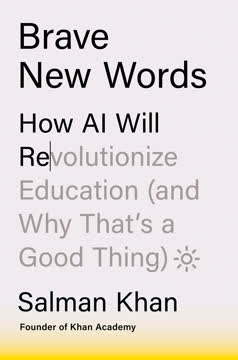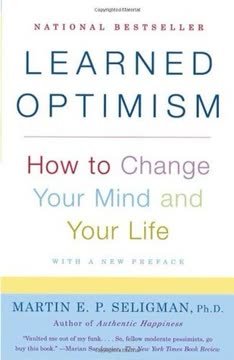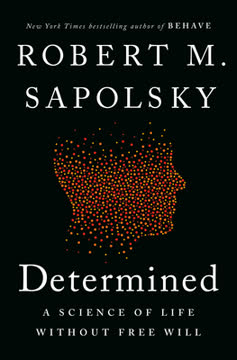Key Takeaways
1. Pleasure is deep: We value things based on their perceived essence
What matters most is not the world as it appears to our senses. Rather, the enjoyment we get from something derives from what we think that thing is.
Essentialism drives pleasure. Humans are natural-born essentialists, believing that things have an invisible essence that makes them what they are. This applies to our understanding of both the physical and social worlds. Our pleasure in something is often based not on its superficial properties, but on what we believe about its deeper nature or history.
Examples of essentialism in pleasure:
- A painting's value changes dramatically if we believe it's by a famous artist
- Food tastes better when we think it's expensive or made with high-quality ingredients
- People pay fortunes for objects touched by celebrities
- We're disgusted by things that look like bodily fluids, even if we know they're fake
This essentialist view affects how we experience pleasure across various domains, from food and sex to art and consumer products. Understanding this can help explain many seemingly irrational human behaviors and preferences.
2. Food preferences are shaped by culture and essentialism, not just taste
Food is a particularly moral domain. There are some things that you shouldn't eat.
Cultural influence on food. While humans have some innate taste preferences, such as a liking for sweet and a dislike for bitter, most of our food preferences are shaped by culture. What's considered delicious in one culture may be disgusting in another. This explains why some cultures eat insects or dogs, while others find the idea repulsive.
Essentialism in food preferences:
- People prefer "natural" foods over "artificial" ones, even if they're chemically identical
- The appeal of organic and locally-produced food often goes beyond taste
- Cannibalism in some cultures is motivated by the belief that eating someone transfers their essence
- Even young children show essentialist thinking about food, believing that a food's history affects its edibility
These essentialist beliefs about food can lead to both positive and negative outcomes. They can motivate healthier eating habits but also lead to irrational fears about certain foods or food technologies.
3. Sexual attraction is influenced by evolutionary factors and individual essence
Love looks not with the eyes, but with the mind.
Evolutionary influences. Sexual attraction is partly shaped by evolutionary factors. Men and women have different mating strategies due to differences in parental investment. This leads to universal patterns in what people find attractive, such as youth and symmetry, which signal reproductive fitness.
Essence in attraction:
- People are attracted to specific individuals, not just their physical properties
- We care about a potential mate's sexual history and genetic relatedness
- Even identical twins are seen as distinct individuals by their romantic partners
- Capgras Syndrome, where people believe loved ones have been replaced by impostors, shows how much we care about a person's perceived essence
However, human sexuality is more complex than just evolutionary drives. We're capable of love, long-term pair bonding, and attraction based on personality and individual qualities. This blend of biological impulses and higher-level cognition makes human sexuality unique in the animal kingdom.
4. We attach special value to objects based on their history and perceived essence
If you ask someone how much she would pay for a coffee cup, and suppose she says $5. You take the money and hand over the cup, and then ask how much she would take to sell the cup back. The rational answer would be $5—or maybe a bit more to pay for the trouble of passing it back and forth. But the mind doesn't work that way; people usually won't take $6 for it. Its worth increases radically. It's different now. It's hers, and this raises its value.
The endowment effect. People tend to value objects more highly once they own them. This is not rational from an economic standpoint but reflects our essentialist thinking about objects. We imbue objects with a special status based on their history and connection to us.
Examples of essentialist valuation:
- People pay huge sums for celebrity memorabilia
- Children become attached to specific toys or blankets
- We value gifts based on who gave them to us
- Family heirlooms are seen as irreplaceable
This tendency can lead to both positive and negative outcomes. It can create meaningful connections to our past and loved ones, but it can also lead to unhealthy attachments to material possessions or difficulty letting go of things we no longer need.
5. Art and performance derive value from the creative process behind them
As performances, works of art represent the ways in which artists solve problems, overcome obstacles, make do with available materials.
Art as performance. The value of art isn't just in its physical properties but in our understanding of how it was created. We appreciate art as a display of human skill, creativity, and problem-solving. This is why original artworks are valued more highly than perfect copies.
Essentialist thinking in art appreciation:
- Forgeries lose value once their true origins are revealed
- Performance art derives meaning from the artist's actions, not just the end result
- We're fascinated by the creative process behind artworks
- Even children show sensitivity to the history and intention behind art
This view of art as performance extends to other domains as well, such as sports and music. We appreciate these activities not just for their end results but for the skill and effort that goes into them. This essentialist view of creative works helps explain why we continue to value human-created art in an age of AI-generated images and music.
6. Imagination allows us to experience pleasure from fictional worlds
Imagination is Reality Lite—a useful substitute when the real pleasure is inaccessible, too risky, or too much work.
The power of imagination. Humans have a unique ability to derive pleasure from imaginary experiences. This capacity allows us to enjoy stories, daydreams, and virtual worlds. Our emotional responses to these imaginary scenarios can be almost as strong as our responses to real events.
Features of imaginative pleasure:
- We can experience emotions from events we know aren't real
- Fictional characters can feel like real people to us
- Imaginary worlds allow us to safely explore dangerous or taboo scenarios
- Daydreaming and fantasy provide an endless source of free entertainment
This ability to find pleasure in imagination is likely an evolutionary accident, a byproduct of our capacity for planning and social cognition. However, it has become a central part of human culture and experience, driving industries like literature, film, and video games.
7. The appeal of aversive experiences lies in safe practice for real-world challenges
Just as play-fighting involves thrusting oneself into a situation that would be dangerous if real, our imaginative play often takes us into situations that include elements that would be unpleasant, sometimes terrible, if they existed in the real world.
Safe practice theory. Many seemingly paradoxical human pleasures, such as horror movies or spicy food, can be understood as forms of safe practice. We're drawn to controlled doses of fear, pain, or disgust as a way of mentally preparing for real-world challenges.
Examples of safe aversive experiences:
- Horror movies allow us to experience fear in a safe context
- Roller coasters provide a controlled dose of danger
- Spicy food gives us a safe way to experience pain
- Sad stories let us practice dealing with loss
This theory helps explain why people seek out experiences that seem unpleasant on the surface. It suggests that what looks like masochism may actually be an adaptive behavior, helping us build resilience and coping skills for real-life challenges.
8. Our essentialist tendencies shape modern pursuits like science and religion
Many people, perhaps all of us, are consciously aware that there is something more to the world than what we perceive. There is an underlying reality that we want to make contact with.
Seeking deeper reality. Our essentialist tendencies drive us to look for deeper meanings and hidden truths in the world around us. This impulse underlies both scientific inquiry and religious belief, two seemingly opposed ways of understanding the world.
Essentialism in science and religion:
- Science seeks to uncover the hidden laws governing the universe
- Religion posits unseen spiritual realms and beings
- Both offer ways to make contact with a reality beyond everyday experience
- Even non-religious people often feel a sense of awe at the "numinous"
This essentialist drive helps explain the universal human tendency towards spiritual or philosophical thinking. It suggests that the impulse behind religion is not necessarily irrational, but rather an extension of our natural cognitive tendencies. Understanding this can help bridge the gap between scientific and religious worldviews, recognizing them as different expressions of the same human desire to understand the essence of reality.
Last updated:
FAQ
What's How Pleasure Works about?
- Exploration of Pleasure: Paul Bloom examines why humans derive joy from various activities, arguing that pleasure is influenced by beliefs and context, not just sensory experiences.
- Essentialism Theory: The book introduces essentialism, suggesting that people believe objects and experiences have hidden essences that contribute to their value.
- Human vs. Animal Pleasure: Bloom contrasts human pleasures with those of animals, highlighting the complexity and cognitive aspects of human enjoyment.
Why should I read How Pleasure Works?
- Understanding Human Nature: The book provides insights into the psychological underpinnings of pleasure, addressing gaps in modern psychology.
- Interdisciplinary Approach: Bloom combines psychology, philosophy, and cognitive science, appealing to readers interested in multiple fields.
- Challenging Assumptions: It encourages readers to rethink their assumptions about pleasure, considering how context and belief shape experiences.
What are the key takeaways of How Pleasure Works?
- Pleasure is Contextual: Enjoyment is influenced by beliefs about experiences, not just sensory qualities.
- Essentialism Matters: Our essentialist beliefs shape our pleasures, attributing deeper meanings to objects and experiences.
- Complexity of Human Pleasure: Human pleasure is intertwined with imagination, culture, and social context, making it rich and varied.
How does Paul Bloom define pleasure in How Pleasure Works?
- Pleasure as a Reward: Bloom describes pleasure as a reward mechanism motivating behavior beneficial for survival and reproduction.
- Deep and Complex: Human pleasure is layered with cognitive and emotional dimensions, distinguishing it from animal pleasure.
- Influence of Beliefs: Beliefs about the essence of experiences significantly shape pleasure, requiring examination of underlying thoughts and contexts.
What role does essentialism play in pleasure according to How Pleasure Works?
- Belief in Hidden Qualities: Essentialism suggests people believe objects and experiences have intrinsic qualities defining their value.
- Impact on Value: The perceived essence of an object can enhance or diminish its value, as seen with celebrity memorabilia.
- Universal Human Trait: Essentialism is a universal trait, shaping how all humans experience pleasure, explaining emotional attachments.
How does Bloom differentiate between human and animal pleasures in How Pleasure Works?
- Basic Needs vs. Complex Enjoyment: Humans and animals enjoy basic pleasures, but human pleasure is more complex and influenced by cognitive factors.
- Cultural and Social Influences: Human pleasures are shaped by cultural contexts and social interactions, unlike in the animal kingdom.
- Imagination and Belief: Human pleasure often involves imagination and belief, allowing for richer experiences.
How does How Pleasure Works address the psychology of food preferences?
- Cultural Influences: Food preferences are shaped by cultural backgrounds and social learning, explaining varying tastes across cultures.
- Biological Factors: While some preferences are biologically driven, individual experiences and cultural context play significant roles.
- Disgust and Aversions: Disgust influences food choices, with certain foods rejected based on learned aversions.
How does Bloom connect pleasure to art in How Pleasure Works?
- Art as a Reflection of Skill: Appreciation for art is tied to perceived skill and effort involved in its creation.
- Cultural Significance of Art: Art serves as a cultural artifact reflecting societal values and beliefs.
- Art as a Fitness Display: Art signals intelligence and creativity, akin to evolutionary fitness displays.
What examples does Bloom use to illustrate his points in How Pleasure Works?
- Joshua Bell Experiment: Highlights how context affects the perception of art, as seen with the violinist's subway performance.
- Cannibalism Case: Illustrates the lengths people go to find deeper meaning and connection in experiences.
- Celebrity Memorabilia: Shows how personal history and connection enhance the value of objects.
How does How Pleasure Works relate to modern society and consumerism?
- Consumer Behavior and Pleasure: Understanding of pleasure influences consumer behavior and choices in modern society.
- Impact of Technology on Pleasure: Technology changes how we experience pleasure, raising questions about well-being and satisfaction.
- Mindful Consumption: Bloom advocates for mindful consumption, reflecting on sources of pleasure and values driving choices.
What insights does Bloom offer about the nature of imagination in How Pleasure Works?
- Imagination as a Source of Pleasure: Imagination shapes experiences of pleasure, allowing engagement with alternative realities.
- Imaginative Play and Development: Essential for cognitive and emotional development, fostering creativity and social skills.
- Imagination and Emotional Responses: Imaginative capacities evoke strong emotional responses, even in fictional contexts.
What implications does Bloom suggest about the nature of art in How Pleasure Works?
- Art as a Reflection of History: Value of art is tied to its history and context, requiring appreciation of cultural significance.
- Performance Context: Setting dramatically alters perceived value of art, affecting enjoyment.
- Emotional Connection: Art elicits pleasure through emotional connections, rooted in artist's intent and audience's interpretation.
Review Summary
How Pleasure Works receives mixed reviews, with praise for its interesting ideas and accessible writing but criticism for lacking depth and concrete conclusions. Readers appreciate Bloom's exploration of essentialism and human psychology, finding many examples engaging. However, some feel the book is repetitive, overly broad, or fails to fully explain the science behind pleasure. Several reviewers note the book's thought-provoking nature despite its limitations. Overall, the book sparks curiosity but leaves some readers wanting more substantial analysis.
Similar Books








Download PDF
Download EPUB
.epub digital book format is ideal for reading ebooks on phones, tablets, and e-readers.









